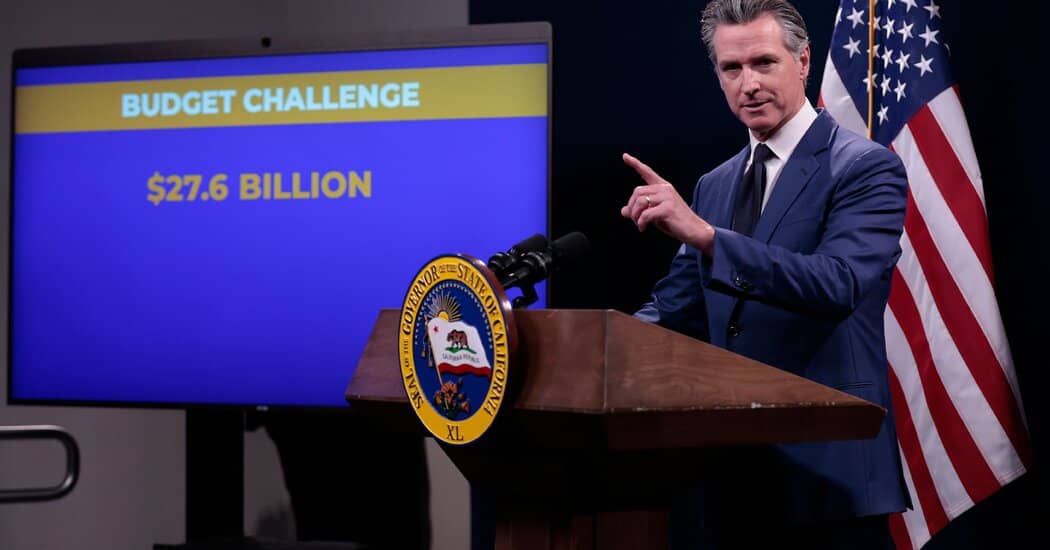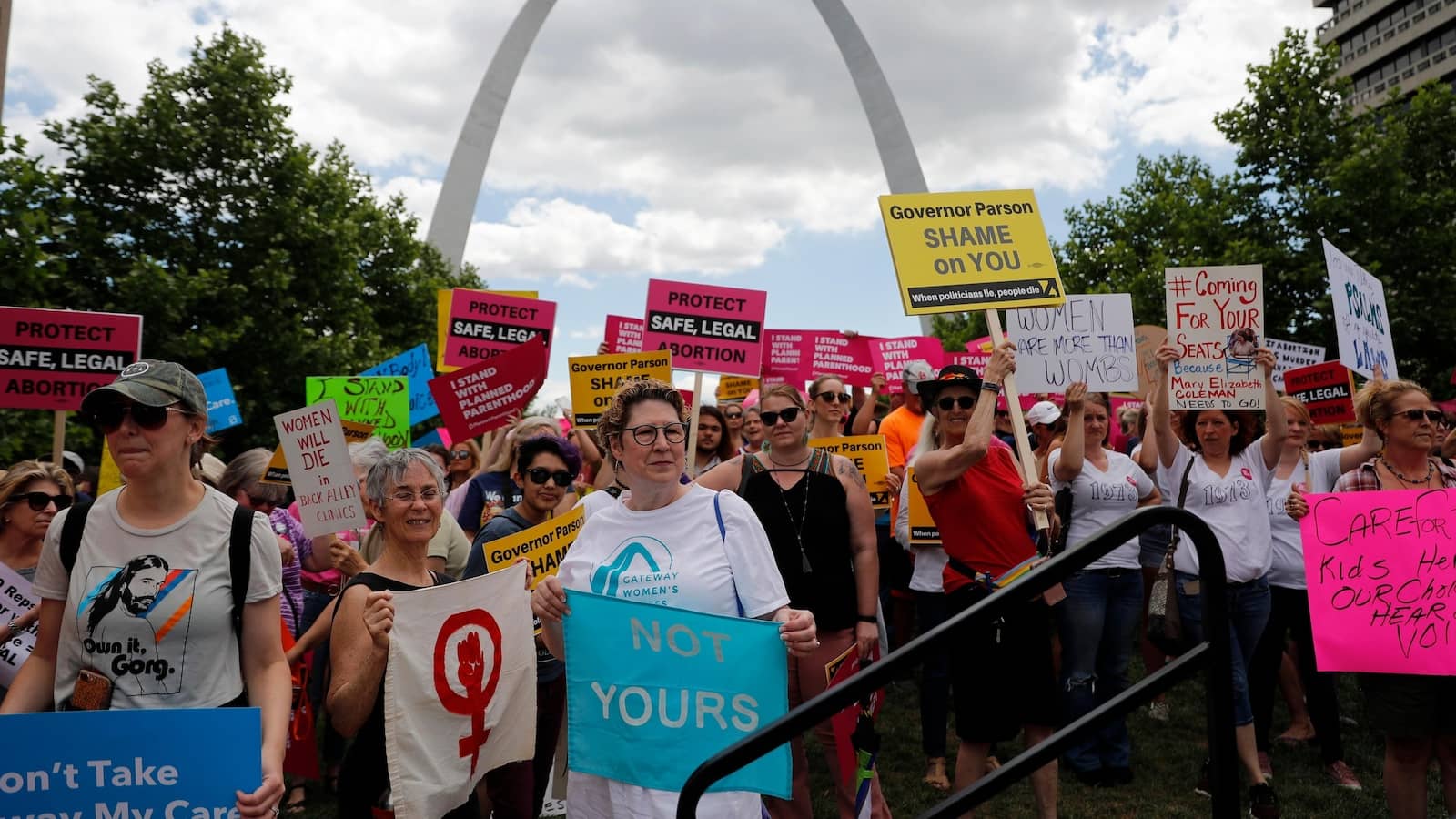California’s state budget dwarfs the gross domestic products of some countries, supporting the nation’s most populous state and the world’s fifth-largest economy. When Golden State finances swing, there is an impact — and they can swing wildly. Two years ago, the state was projecting a record surplus; now, state lawmakers are confronting tens of billions of dollars in red ink.
State law requires legislators to pass a balanced budget by June 15 each year or lose their pay and expense money. It’s typically a fraught process. This year’s negotiations have largely centered on how much social spending the state will cut and whether the state should postpone an increase in the minimum wage that was signed into law last year for nearly all health workers, many of whom work at state teaching hospitals.
On Thursday, the Legislature passed place-holder legislation that allows lawmakers to technically meet the deadline while talks with Gov. Gavin Newsom continue on some of the remaining sticking points. A final deal, to be written into a few supplemental bills, is expected in a few days. The budget takes effect on July 1.
Why do California’s finances jump around so much?
Volatility is a natural byproduct of California’s system of taxation. Designed to be progressive and fairer to low-income taxpayers, it relies heavily on taxes on personal income and capital gains.
When rich taxpayers have a good year, the state government reaps a windfall. But when initial public offerings slump or the stock market reverses, revenue tanks. And the state has limited flexibility in raising revenue in times of shortfall because, in most cases, the law requires a two-thirds supermajority in the Legislature to pass a tax increase.
What has the state done to manage the volatility of its finances?
Californians have chipped away for some time at the state’s budget dysfunction, which used to be much worse. In 2004, voters passed a constitutional amendment requiring the state to reserve 3 percent of general fund revenue every year, regardless of the state’s economic performance. But the reserve fund barely got off the ground before the 2008 financial collapse slammed the state.
The recession’s aftermath prompted a number of budget reforms. In 2010, for example, lawmakers successfully put forward a ballot measure that bolstered the reserve fund. Voters also approved a ballot measure that streamlined the budget-making process, lowering the two-thirds supermajority threshold for budget passage to a simple majority vote.
As the economy rebounded, Gov. Jerry Brown and state lawmakers capitalized on those reforms to further stabilize the state’s finances, persuading voters to increase the reserve fund, require that even more money be funneled into it when capital gains tax revenue is booming and toughen the rules for using the money in lean times.
As the recent fluctuations have proved, the system still has room for improvement. But California lawmakers expect to to dip into that healthier reserve fund to help balance the budget this year.
What caused California’s recent huge swing from surplus to shortfall?
In 2021, a robust stock market drove state revenue up, only to drag it back down when the market slumped the next year. As the Federal Reserve raised interest rates in an effort to curb post-pandemic inflation, higher borrowing costs for businesses led to higher unemployment and fewer initial public offerings and startups, which in turn depressed revenue from the tax on capital gains.
The economy bounced back in 2023, but write-offs from the previous year dampened the state’s rebound. On top of that, winter storms prompted the Internal Revenue Service to extend the tax filing deadline for most California taxpayers, making it hard for the state to accurately project its own tax receipts.
Lawmakers had to pass the budget the state is currently operating on before it was clear how much money would be coming in, and they were too optimistic. When the state’s financial picture finally became clear, it showed that state tax receipts were 22 percent below expectations.
Where does California’s budget stand now?
In December, the state’s nonpartisan budget analyst projected a deficit of about $68 billion for the 2024-25 fiscal year. A month later, the governor’s finance experts, using different methods, pegged the shortfall at about $38 billion, which was slightly more manageable.
Governor Newsom and state lawmakers made some early cuts, shifts, delays and other spending maneuvers that, by the governor’s estimate, whittled the gap for the coming year to about $27.6 billion.
In May, the governor proposed a grab bag of solutions that included no new taxes but would cancel some planned spending, spread the pain across a range of state programs, suspend some tax breaks for businesses and dip into state reserves. His proposal also omitted funding for a planned increase in the minimum wage for health-care workers to $25 per hour.
Legislators countered with a plan to make deeper cuts in the state’s prison funding and speed up the suspension of business tax breaks, leaving more money for the social safety net, including child care and health care. Otherwise, their plan has largely aligned with Mr. Newsom’s, including eliminating about 10,000 unfilled state jobs.
Will this year’s budget deal address California’s structural budget issues?
It could. Both of the current proposals budget for two fiscal years rather than just one, allowing lawmakers to start work early on projections that revenue will come in short again next year. Both the governor and legislators also want to gradually increase the size of the state’s rainy-day fund. And both would create a temporary account that would prevent a portion of future surpluses from being spent until the money is actually in hand.
What’s left to be decided?
Lawmakers say they are close to a deal and expect to announce one shortly. State law requires that the final legislation be in print for 72 hours before it is voted on.




